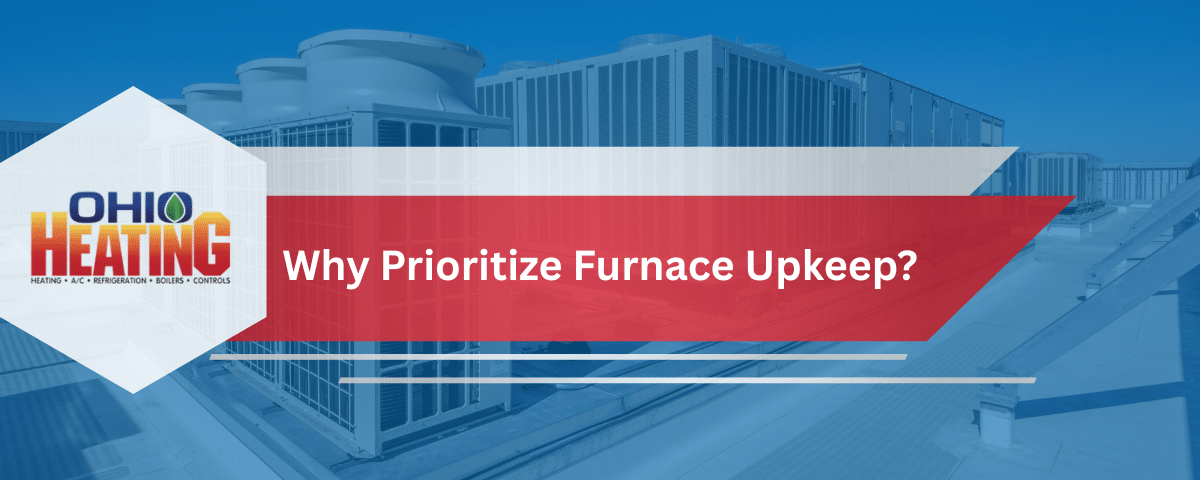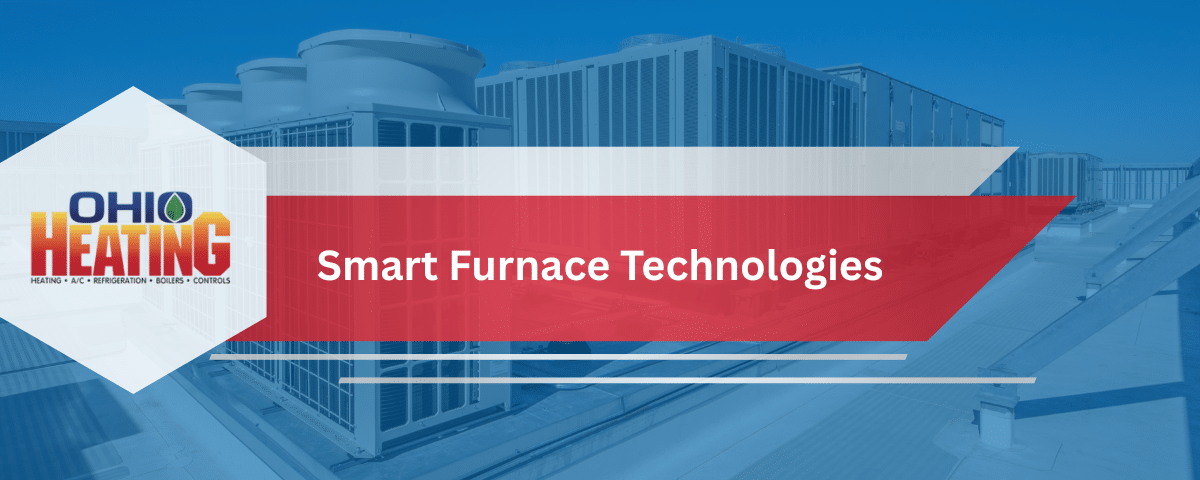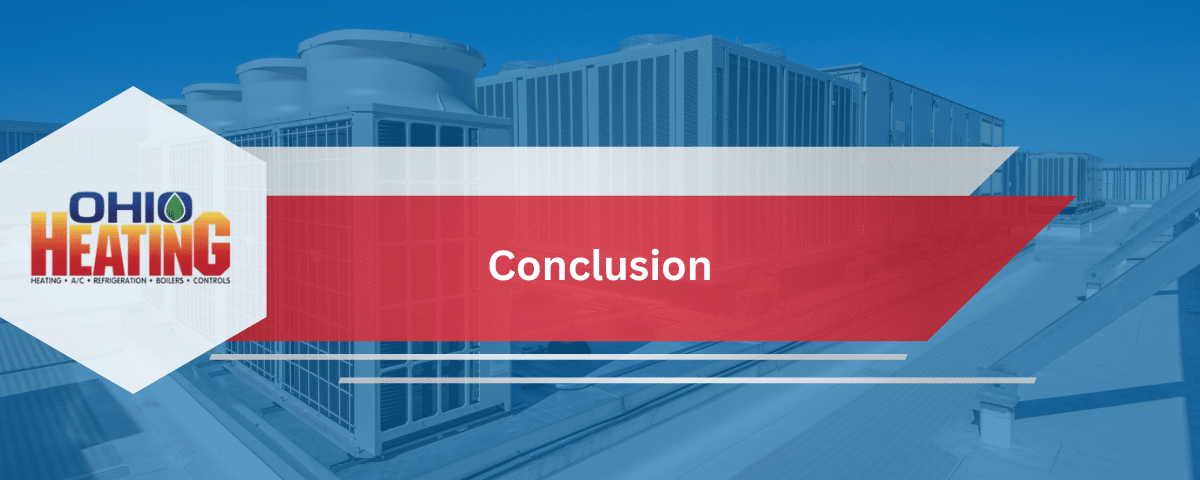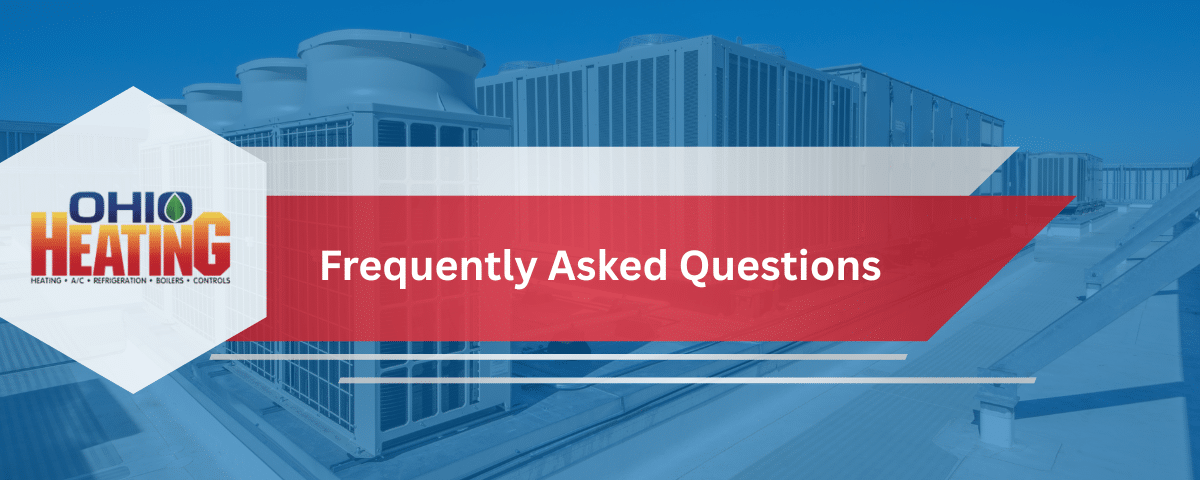Commercial Furnace Maintenance: Proactive Care for Winter Readiness
Key Takeaways
- Plan preventive commercial furnace maintenance before winter to minimize downtime risk and stay compliant. Construct a written schedule based on manufacturer guidelines and local safety codes.
- Put safety first with inspections that check gas integrity, carbon monoxide protection, and safety controls. Replace worn parts without delay to avoid dangerous malfunctions and safeguard residents.
- Cost controls through efficiency and early detection reduce energy consumption and eliminate emergency repairs. Maintain warranty coverage with recommended service intervals and log each visit.
- Prolong system life through cleaning, calibrating, and testing parts that reduce heat exchanger, burner, and fan wear. Postpone capital replacement by keeping performance and consistent efficiency over time.
- Enhance your workplace comfort and air quality with proper airflow, balanced distribution, and clean filtration. Tackle cold spots, duct leaks, and control inaccuracies to fuel productivity and occupant health.
- Adopt smart technologies such as predictive analytics and IoT monitoring to shift from reactive to condition-based maintenance. Leverage real-time alerts and performance trends to optimize settings, lower emissions, and conserve kilowatt-hours and cubic meters of gas.
Commercial furnace maintenance refers to scheduled inspections, cleaning, and tune-ups that ensure large-scale heating systems remain safe, efficient, and up to code.
They include burner inspection, heat exchanger inspection, flue draft testing, and gas pressure tests, as well as controls calibration. Regular service reduces fuel consumption, decreases the likelihood of breakdowns, and increases the lifespan of your equipment well beyond 15 years.
For facility managers, a written strategy, seasonal tune-up, and air-flow balancing are what count. All next, actionable steps, service intervals, and when to call a pro for heavy lifting.
Why Prioritize Furnace Upkeep?

Commercial furnaces do heavy lifting through long, cold winters, and scheduled upkeep keeps heat consistent, safe, and compliant. Regular service ahead of peak season minimizes downtime risk, safeguards capital assets, and helps maintain budget stability throughout the year.
Benefits include:
- Lower energy use and monthly utility bills
- Fewer emergency repairs and less unplanned downtime
- Longer equipment life and delayed replacement
- Better indoor air quality and comfort
- Documented compliance with safety and code requirements
1. Operational Safety
Regular inspections catch these hazards before they become deadly. Technicians test for gas leaks at unions and valves, verify combustion quality, and perform carbon monoxide (CO) measurements near the heat exchanger and in the breathing zone.
Even minor leaks pose a genuine hazard in congested dwellings. Safety circuits are verified end to end: high-limit switches, rollout switches, flame sensors, pressure switches, and emergency shutoffs.
We verify fail-safe states and test interlocks, not simply visual inspections. As worn igniters, cracked heat exchangers, frayed wiring, and degraded gaskets are identified and replaced before they escalate.
Keeping combustion air paths clear and flues tight helps maintain a safe environment for your staff, customers, and tenants.
2. Financial Savings
An appropriately tuned furnace operates at maximum efficiency, which means it doesn’t waste energy and can lower your monthly bills. Little things like duct leaks, dirty filters, and misaligned burners add up to actual expenses over the course of a whole season.
These proactive checks prevent issues from snowballing into expensive breakdowns. Yearly maintenance is the best way to prevent costly repairs. It backs warranty conditions — avoiding service can invalidate coverage and push expenses back on you.
Fewer breakdowns lead to fewer call-outs and less overtime labor and lost revenue from cold spaces.
3. System Longevity
Fix small malfunctions before they strain the system. Loose belts, dirty blower wheels, and imbalanced fans all shorten life if ignored. Routine cleaning and calibration minimize wear on heat exchangers and blower assemblies.
Maintaining airflow and combustion within spec maintains rated efficiency season after season. Neglect can shave years off equipment life. Postponing early replacement safeguards capital budgets and maintains operational predictability.
4. Workplace Comfort
Even temperatures aid productivity and customer linger times. Balanced air flow and sealed ducts minimize cold spots that prompt comfort complaints.
Clean filters and blower assemblies help improve indoor air quality by reducing dust load and ensuring correct ventilation rates. This in turn yields a more stable and healthier environment across zones.
5. Energy Efficiency
Optimization, including combustion tuning, airflow calibration, and control setpoint review, provides quantifiable energy savings. Regular servicing cuts excess and facilitates updates such as high-efficiency burners or smart controls.
Keep an eye on efficiency with seasonal performance checks, monitor gas use per square meter trends, and optimize as loads shift. Less energy consumption means fewer emissions and a smaller environmental footprint for your building.
The Proactive Maintenance Process

A simple plan for commercial heating maintenance prevents downtime, minimizes energy consumption, and increases equipment longevity. The schedule is matched to load patterns, climate, fuel type, and building use. Employ trained technicians for inspections and maintenance of your commercial HVAC systems, and maintain hard copy records for trend tracking, budgeting, and compliance.
Comprehensive Inspection
Begin with a comprehensive visual and operational review of heat exchangers, burners, ignition assemblies, flue passage, venting, and electrical connections. Examine belts, bearings, blower wheels, and motor mounts. Make sure that combustion air paths are clear.
Check gas valves, regulators, and manifold pressures to manufacturer’s specifications. Search for cracks, hot spots, corrosion, gasket wear, and soot that signal poor combustion or stress. Inspect for fuel and condensate leaks.
Check insulation, seals, and doors for heat loss. Scan panels and terminations for discoloration or loose lugs. Check thermostat location, sensor calibration, control sequences and safety interlocks.
Test staging or modulation and verify setpoints, deadbands, and time delays. For BMS-integrated sites, confirm point, alarm and override status. Use a checklist by equipment type: make, model, serial, component status, measured values, and corrective actions.
Standardize across sites to make it consistent and auditable.
Thorough Cleaning
To ensure optimal performance of your commercial heating system, deglaze burners and flame rods, as a light film can cause flame failure. Additionally, clean blower wheels and housings to regain static pressure, and replace or wash filters of the appropriate MERV class to safeguard coils and maintain consistent airflow in your commercial HVAC systems. Start by cleaning supply and return grilles, then test duct sections where debris may fall out of air flow, such as elbows and low-velocity runs. Implement certified processes to prevent fiber release on lined ducts.
Good air circulation not only enhances comfort but also reduces energy consumption. Regular furnace maintenance is crucial; clean condensate traps, pans, and drains, rinsing with fresh water and dropping in tablets if permitted. Stagnant water can develop biofilm and may spill over onto ceilings or floors, leading to potential damage.
To maintain a reliable climate control environment, schedule cleanings based on runtime hours, dust loads, and specific process requirements. Spaces such as kitchens, workshops, and high-occupancy areas will require more frequent maintenance cycles to address their unique heating and cooling needs.
By adhering to a comprehensive maintenance plan, you can avoid costly repairs and ensure that your HVAC system operates efficiently, providing a comfortable environment for all occupants.
Precise Calibration
Establish burner air-fuel mix by combustion analysis. Subject maker O2, CO, and stack temperature. Clean burners, clean flame sensor, and flame rod.
Calibrate thermostats and space sensors with a reference thermometer. Adjust control loops, reset curves, and night setback schedules so comfort aligns with occupancy while conserving energy.
Calibrate fan speeds to design airflow in cubic meters per hour and static pressure. Balance zones to eliminate hot and cold spots. Log readings: O2, CO (ppm), draft, supply/return temperatures, kW, and airflow.
Trend to catch drift early.
Safety Testing
Test for high-limit, rollout, pressure, and airflow switches trip as designed and that the unit recovers correctly. Verify emergency stop from local and remote locations.
Conduct leak checks on gas trains with calibrated detectors and pressure drop tests. Check regulator lockup and stability under load. Test CO alarms and placement near sleeping areas and equipment rooms per local codes.
Swap sensors at end-of-life tags. Close with a compliance review: labels updated, access clearances maintained, and all deficiencies logged with due dates.
Early Warning Signs

Identify early warning signs related to your commercial HVAC system. By recording information and employing a simple checklist, including dates and corrective steps, you can minimize risks, expenses, and costly downtime.
- Unusual or louder than normal noises from fans, belts, burners, or ducts.
- Unusual smells, including mold, gas-like, or burnt odor.
- Rising energy bills or kWh with no usage change.
- Dimming or flickering lights when the unit starts.
- Cold spots, weak airflow, or poor return air.
- Higher indoor humidity and more dust on surfaces.
- Short cycling, hard starts, or longer run times.
- Thermostat gaps between setpoint and actual temperature.
Unusual Noises
Rattling indicates loose panels, motor mounts, or screws rattling in sheet metal. Banging or booming on burner light-off can indicate delayed ignition, dirty burners, or gas-air mix problems.
Squealing and chirping usually lead back to belt slip, bearing wear, or blower misalignment that can snowball into motor failure. Early warning signs about act fast.
Record noise kind, time of day, zone, fan speed and whether it occurs at start-up or steady state. This assists in isolating root causes in large plants.
As part of regular maintenance, torque down hardware, replace worn belts, align pulleys, and lubricate bearings where designed to do so. Detecting minor vibration today keeps cracked outlets and duct damage at bay tomorrow.
Rising Energy Bills
Monitor energy on a monthly basis and year-over-year to identify a 5 to 10 percent efficiency decrease. A spike in energy bills without higher usage is an early warning sign.
Be aware that a heavier than usual summer load can hide a dying system. Look at annual costs to discern the pattern.
Check basics first: clogged filters, fouled coils, failed economizer dampers, and faulty thermostats or sensors. Look for dimming or flickering lights on start-up which indicate high inrush current from stressed motors.
Fix causes quickly by swapping filters, cleaning coils, calibrating controls, and checking gas pressure. Recovering productivity reduces performance cost and the burden on resources.
Inconsistent Heating
Uneven temperatures indicate airflow or control deficiencies. Verify supply and return vents are unobstructed and check for duct leaks with smoke pencils or pressure tests.
Check zone dampers, actuators, and BAS schedule. A stuck damper can starve one wing and can overheat the other.
If cold spots remain, schedule service to balance the system, confirm fan curves, and check heat exchanger performance and combustion tuning.
Poor Air Quality
Increased dust, musty odors or headaches indicate filtration and moisture issues. An increase in indoor humidity is an early warning sign that your system is failing or the ventilation is compromised.
Swap clogged filters, clean ducts where debris is heavy, and seal moisture entry that causes mold odors. Test for CO and flue integrity.
Add IAQ measures as needed: higher MERV filters, CO2 monitoring, dehumidification, or UV where appropriate. These steps preserve health and contribute to load stabilization.
The Hidden Costs of Neglect

What you don’t pay for regular furnace maintenance, you pay for in added energy costs, costly repairs, and risk. These expenses manifest as elevated utility bills, unnecessary part failures, and disruptions that impact employees, tenants, and customers.
Emergency Repairs
Emergency calls are pricier. After-hours dispatch, priority travel and overtime labor add up quickly, and rush parts tend to ship with premium charges as well. A failed blower motor or ignition control on a cold night can increase the invoice well past a scheduled daytime repair.
The strain is genuine. Breakdowns set off space heaters, disgruntled tenants, and safety issues. Poor indoor air quality comes next when filters and ducts are left unexamined. Dust and mold can exacerbate asthma and allergies, and even increase exposure risk related to Legionnaires disease or sick building syndrome.
Most emergencies are not inevitable. Preventive maintenance programs identify cracked heat exchangers, fouled flame sensors, and belt wear ahead of time. Arrange for service during non-peak hours to prevent disruption and to get regular labor rates without rush surcharges.
Business Downtime
Heating outages disrupt operations, stall sales floors and stop production lines. A retail floor can lose sales per hour as customers exit a chilly store. A call center can drop call volume as reps wrap in scarves and lose concentration.
If temperatures dip below safe levels, certain locations need to shut down until heat resumes. Tenants judge management by comfort and responsiveness. Cold offices fuel complaints, early lease departures, and lease risk.
Bad air from dirty filters boosts sick days and breaks morale. In food service and healthcare, downtime can turn into compliance issues. Avoid downtime with a proactive plan.
Quarterly filter changes, combustion analysis, and duct inspections keep airflow and efficiency on target, lowering energy use and stabilizing bills. Right sized equipment matters as well. Oversized units short-cycle and waste energy. Undersized units run hot and fail early.
Premature Replacement
Commercial heating systems and HVAC systems are designed to last 15 to 20 years with proper care. However, inadequate HVAC maintenance can shorten that lifespan significantly. Heat exchangers may crack due to repeated short cycling, while bearings can run dry, and compressors may struggle under high head pressure from dirty coils. Regular furnace maintenance is essential to avoid costly repairs and ensure reliable climate control.
Replacement of HVAC systems can occur years earlier than expected, leading to unplanned expenses. By utilizing commercial HVAC experts for an initial audit, you can schedule design upgrades that include efficient, right-sized units to cut consumption and avoid peak-season premiums.
Early fixes, such as addressing weak capacitors, clogged drains, or slack belts, are relatively inexpensive compared to the thousands spent on a compressor replacement. This proactive approach can save business owners significant costs in the long run.
Incorporating a comprehensive maintenance plan ensures that your commercial heating and cooling needs are consistently met, preventing costly breakdowns and maintaining a comfortable environment for your commercial property.
- Extra energy use from dirty filters/coils raises monthly expenses.
- After-hours emergency labor and expedited parts premiums.
- Lost revenue and productivity during downtime or closures.
- Health-related costs from poor air and associated claims.
- Capital shock from early system replacement plus disposal.
- Tenant churn and reputational damage across portfolios.
Smart Furnace Technologies

Modern commercial heating systems utilize sensors, controls, and software to enhance energy efficiency, stabilize comfort, and minimize downtime. These commercial HVAC solutions can overlay existing plants or new installations, integrating into building systems and fueling data-driven maintenance while cutting waste that can reach 30 to 50 percent.
Predictive Analytics
With predictive tools that pull from supply and return temperatures, gas valve modulation, static pressure, combustion efficiency, and run hours, they learn what’s normal, detect drift, and predict failures such as a heat exchanger running hot at reduced airflow or a fan pulling increasing amps.
That way, problems are repaired before a no-heat incident floors a unit. Trend analysis identifies inefficiency trends. If a burner utilizes more fuel for the same load, you probably have fouled heat exchangers, poor combustion tuning, or control loop hunting.
By aiming at the defect, you recover kilowatt and cubic meter efficiency instead of quickly exchanging components. Condition-based schedules trump fixed calendars. Filter changes, belt replacements, and combustion tuning happen just when they should—when pressure drop, vibration, or flue gas readings cross set thresholds.
This moves labor to high-value work and minimizes spare inventory. Costs plummet when outages are infrequent and brief. Predictive maintenance boosts equipment life by 20 to 40 percent, and combined with pre-heating under off-peak tariffs, it reduces demand charges and eliminates start-up stress.
IoT Integration
IoT connects furnaces, air handlers, pumps, and terminal units to a BMS, enhancing commercial heating maintenance. Through an open protocol gateway, you centralize all setpoints, schedules, alarms, and trend logs across zones, floors, and sites. That consolidated perspective is crucial because HVAC can consume 40 to 50 percent of a building’s power.
Remote access allows for live diagnosis. A tech can verify burner cycles, damper positioning, and stack temperature right from a phone or laptop, cycle through test modes, and validate sensor health. About half the platforms send immediate notifications for flame failure, abnormal discharge temperature, or carbon monoxide increase, expediting triage and HVAC service dispatch.
Real-time information underlies adaptive control. It can trim supply air based on occupancy counts, weather forecasts, or zone priority. It can pre-heat or pre-cool during off-peak hours so spaces are ready by opening, then slide at a lower load the rest of the day.
That logic helps the unit meet zoning requirements without overshoot or short cycling. Energy tuning is ongoing. IoT-enabled furnaces modulate by load, tighten deadbands, and coordinate with economizers and heat recovery, addressing various commercial HVAC needs.
Over a season, these steps can save 30 to 50 percent energy, stabilize comfort, and reduce operational risk with predictive maintenance and transparent service alerts built in.
Columbus Commercial HVAC Services

Commercial furnace maintenance requires a strategy, not a single trip. Ohio Heating backs facilities all over Central Ohio with regular service that reduces danger, contains energy consumption, and keeps heat up when they’re counting on it. Consistent care avoids breakdown and expensive repairs.
Missed maintenance results in reduced performance, increased errors, and premature parts failure. Serving Columbus and surrounding cities such as Dublin, Westerville, Gahanna, and Hilliard, multi-site operators can maintain consistency of standards.
Depend on Ohio Heating’s industry-leading experience for full commercial HVAC service and repairs throughout Central Ohio. Many local providers have nearly 40 years in the field, which is evident in how they define scope, report findings, and predict parts aging.
An experienced tech knows the spots where heat exchangers like to crack, what belts glaze first, how flue draft shifts with stack height, and when those bearings start to sing. That insight reduces downtime as problems are resolved before they become no-heat calls.
Annual maintenance contracts provide predictability for budgets and workload planning and support steady system efficiency through the entire heating season.
Receive priority scheduling and emergency services for your local business. Production lines, clinics, data rooms, and retail floors all have varying tolerance for heat loss.
Priority customers receive prioritized service, stocked vans, and after-hours availability. If a rooftop unit locks out at 02:00, an emergency team can reset safeties, replace a failed igniter, or temporarily bypass a failed sensor and return with the OEM part by morning.
For planned work, crews stage access, lifts, and safe zones to shorten disruption. They then provide clear reports with readings: combustion air, manifold pressure, temperature rise in °C, static pressure in Pa, and combustion results (O2, CO, CO2).
Reliance on seasoned, licensed specialists to provide excellent service and guarantee complete satisfaction. Our NATE-certified pros bring proven training and hands-on skill, backed by a local track record that includes a 4.9-star rating from over 900 reviews.
Work includes gas and oil furnaces, unit heaters, make-up air, and hydronic with repair and full replacement available when equipment is at the end of its life.
Service packages and features:
| Package | Visit frequency | Core tasks | Added value |
| Essential | 1× per year | Safety check, filter fit, burner clean, ignition test, basic combustion tune | Compliance report, parts list |
| Standard | 2× per year | Essential scope plus belt and bearing care, airflow balance, controls calibration | Priority scheduling, minor parts included |
| Premium | Quarterly | Standard scope plus full combustion analysis, heat exchanger scan, trend logs | 24/7 emergency response, extended labor cover |
Conclusion

Quality furnace maintenance rewards include reduced bills, less downtime, safer employees and visitors, fresher air, and an extended lifespan for the equipment. That accumulates quickly on a busy site.
Make a plan. Record filter changes. Inspect belts, gas trim, flame shape, vent draft, and safeties. Record run hours. Employ smart alerts that identify short cycles, high stack temperatures, or strange fan amps. Easy actions prevent hard knocks. One bakery slashed fuel by 12 percent after a fine tune on air-fuel. A school caught a cracked heat exchanger before the winter rush.
Require assistance in Columbus or vicinity? My crew can schedule, tune your system, and keep your plant online. Contact us for a quote or a quick walk-through.
Frequently Asked Questions

How often should a commercial furnace be serviced?
Have professional commercial heating maintenance done at least annually, preferably before the heating season. Your heavy-use facilities might require inspections twice a year. Regular service keeps the commercial HVAC system efficient, minimizes breakdowns, and preserves warranties.
What does a proactive maintenance visit include?
During a maintenance visit, a technician checks out heat exchangers, burners, and ignition systems while also inspecting gas pressure and measuring airflow to ensure the commercial heating system operates efficiently.
What are early warning signs my furnace needs attention?
Look out for uneven heat from your commercial heating system, increasing energy bills, short cycling, new sounds, burning smells, or excessive lockouts. Seek out yellow burner flames, soot, or alerts from your building management system.
How does maintenance reduce operating costs?
Properly maintained commercial HVAC systems, which are clean and tuned, consume less energy, reduce the risk of expensive repairs, and extend the life of the equipment. With fewer emergency calls and less downtime, you protect your budget.
What smart technologies improve furnace performance?
Smart thermostats, CO and combustion sensors, variable-speed fans, and remote monitoring optimize runtime for commercial HVAC systems, detect problems early, and provide actionable reports, enhancing control and efficiency.
Is furnace maintenance a safety requirement?
Yes. Nearly every state mandates inspection of gas appliances and venting as part of comprehensive HVAC maintenance. Maintenance checks combustion, flue integrity, safeties, and CO risks, supporting compliance and insurance requirements.
Do you serve commercial properties in Columbus, Ohio?
Yes. We service offices, retail, healthcare, education, and light industrial sites across Columbus with our comprehensive HVAC maintenance. We offer planned maintenance, repairs, and upgrades with twenty-four seven support. Contact us to schedule a site assessment.
